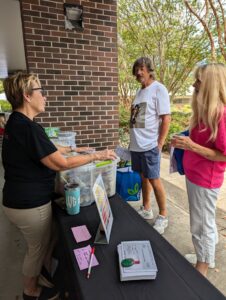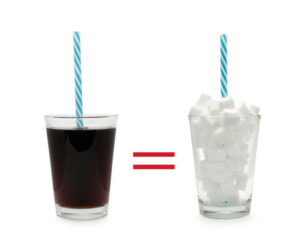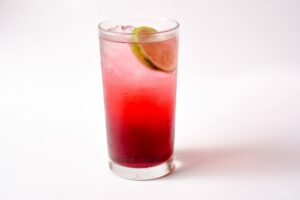Reduce Added Sugars in Beverages
go.ncsu.edu/readext?1029308
en Español / em Português
El inglés es el idioma de control de esta página. En la medida en que haya algún conflicto entre la traducción al inglés y la traducción, el inglés prevalece.
Al hacer clic en el enlace de traducción se activa un servicio de traducción gratuito para convertir la página al español. Al igual que con cualquier traducción por Internet, la conversión no es sensible al contexto y puede que no traduzca el texto en su significado original. NC State Extension no garantiza la exactitud del texto traducido. Por favor, tenga en cuenta que algunas aplicaciones y/o servicios pueden no funcionar como se espera cuando se traducen.
Português
Inglês é o idioma de controle desta página. Na medida que haja algum conflito entre o texto original em Inglês e a tradução, o Inglês prevalece.
Ao clicar no link de tradução, um serviço gratuito de tradução será ativado para converter a página para o Português. Como em qualquer tradução pela internet, a conversão não é sensivel ao contexto e pode não ocorrer a tradução para o significado orginal. O serviço de Extensão da Carolina do Norte (NC State Extension) não garante a exatidão do texto traduzido. Por favor, observe que algumas funções ou serviços podem não funcionar como esperado após a tradução.
English
English is the controlling language of this page. To the extent there is any conflict between the English text and the translation, English controls.
Clicking on the translation link activates a free translation service to convert the page to Spanish. As with any Internet translation, the conversion is not context-sensitive and may not translate the text to its original meaning. NC State Extension does not guarantee the accuracy of the translated text. Please note that some applications and/or services may not function as expected when translated.
Collapse ▲A couple of weeks ago our office participated in the first annual Brunswick County
Health and Wellness Fair at the Government Complex in Bolivia. If you didn’t get to go, you missed a really big event. There were exhibits, activities, food and fun located all around the Government Center. There were over 30 exhibits from local businesses and organizations as well as demonstrations and health screenings.
NC State Cooperative Extension, Brunswick County is located in the Government Center, 25 Referendum Drive, Building N in Bolivia. For the Health and Wellness Fair we set up exhibit tables on the portico in front of our office. Our NC State Extension Master Gardener℠ volunteers and Consumer Horticulture staff were on hand to answer lawn and garden questions and led tours of the Brunswick County Botanical Garden which is next to our building.

Extension Master Food Volunteer, Lori Van Horn from Ocean Isle Beach greets participants at the N.C. Cooperative Extension exhibit at the Brunswick County Health and Wellness Fair.
Our Family and Consumer Sciences team along with our Extension Master Food Volunteers (EMFV) were also there staffing an exhibit. Our tables focused on our Mediterranean Diet program called “Med Instead of Meds”. Our display showed how much added sugar is in popular beverages.
Drinks with added sugars include sodas, fruit drinks, sweetened teas and coffee
(including sweet iced tea), flavored waters, chocolate milk, sports drinks and energy
drinks.
How much sugar is really in these drinks? Here are a few examples:
- 20-ounce cola = 16 teaspoons sugar (65 grams)

- 20-ounce sports drink = 8 teaspoons sugar (35 grams)
- 14-ounce chocolate milk = 11 teaspoons sugar (45 grams)
- 8.3-ounce energy drink = 7 teaspoons sugar (27 grams)
- 6-ounces fruit punch = 5 teaspoons sugar (20 grams)
- 8-ounces of orange juice = 6 teaspoons sugar (25 grams)
If you do the calculations, there are 4 grams of sugar in each teaspoon of sugar and each of these provides 16 calories. So, you can see how quickly these sugar calories can add up. To put this in perspective, a 1.6 ounce chocolate bar has 5 teaspoons or 20 grams of sugar. Eating three of these would still be less than added sugar than in one 20-ounce soda.
So, you may ask, how much sugar am I supposed to have every day? I’m talking added sugars here—not the kind of sugar that’s naturally in food like fruits, vegetables and milk. You really don’t need any “added sugars” each day. Luckily, food labels now tell us the difference between natural sugars and added sugar.
The Dietary Guidelines for Americans 2020–2025 recommend that people age 2 years or older limit added sugars intake to less than 10% of their total daily calories. That means for a 2,000 calorie diet, no more than 200 calories should come from added sugars. That’s about 12 teaspoons of added sugar from both food and beverages a day (that’s less than in one 20-ounce cola). An added note: children younger than 2 years should not be given any foods or beverages with added sugars.
We wanted to share a refreshing alternative to sugary sodas at the Health and Wellness far. So, we provided samples of a Cranberry Lime Soda from the “Med Instead of Meds” recipe library. Here’s the recipe for you to try yourself.
Cranberry Lime Soda
- ⅓ cup cranberry juice (100% juice, no sugar added)

- ⅔ cup club soda
- 1 lime slice (for garnish)
- Lime juice (optional)
Combine cranberry juice and club soda. Add a splash of lime juice and garnish with lime slice.
The drink received good reviews. There were lots of questions about using the fruit juice due to its natural sugar calories. We did use 100% cranberry juice not a juice blend or a juice cocktail. By adding the club soda, we reduced the calories and got a nice fizz with only 31 calories per cup. These calories were from the natural sugar in the cranberries and not added sugar in the recipe. And cranberries are high in vitamin C…so you get a little nutrition, too.
If you’d like more information about our “Med Instead of Meds” programs check out
our website or give Avery Ashley, our Family and Consumer Science Agent, a call. We
have some classes scheduled or could bring the “Med Instead of Meds” series out to
your group or community.
The county’s office of Risk Management is already planning for next year’s Healthy and Wellness Fair—be looking for the dates.
Syracuse is a Family and Consumer Science team member and can be reached at N.C. Cooperative Extension, Brunswick County Center 910-253-2610 or by email at
clsyracu@ncsu.edu



